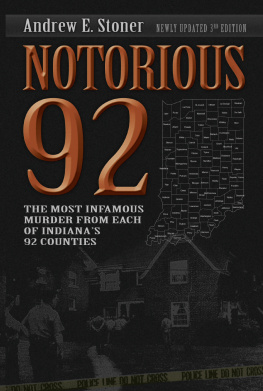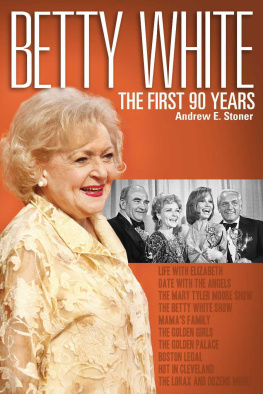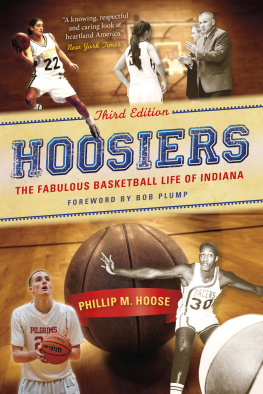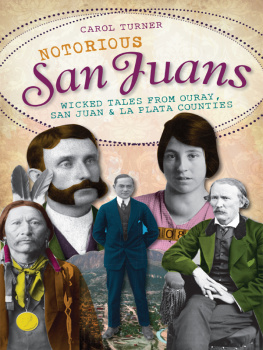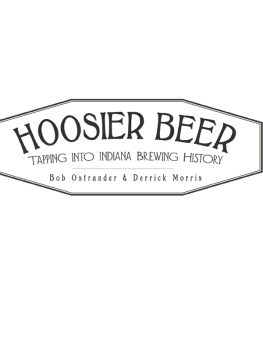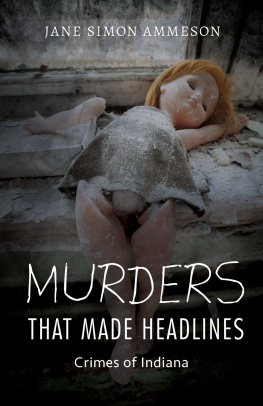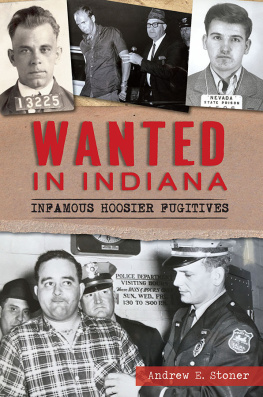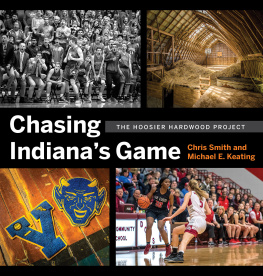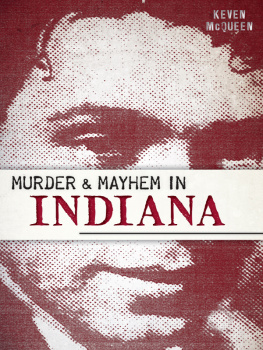Contents
Pagebreaks of the print version

NOTORIOUS 92
Andrew E. Stoner

Notorious 92, 3rd Edition
The Most Infamous Murders from Each of Indianas 92 Counties
Copyright 2007, 2009, 2017 by Andrew Stoner
All rights reserved
First edition published 2007
Published by Blue River Press
Indianapolis, Indiana
www.brpressbooks.com
Distributed by Cardinal Publishers Group
A Tom Doherty Company, Inc.
www.cardinalpub.com
All rights reserved under International and Pan-American Copyright Conventions
No part of this book may be reproduced, stored in a database or other retrieval system, or transmitted in any form, by any means, including mechanical, photocopy, recording or otherwise, without the prior written permission of the publisher.
ISBN: 978-1-68157-025-9
Author: Andrew Stoner
Editors: Dani McCormick, Morgan Sears
Cover Design: Phil Velikan
Printed in the United States of America
ACKNOWLEDGMENTS
This book would not have been possible without the outstanding work of journalists at Indiana newspapers, big and small, in all ninety-two counties. As the authors of the first draft of history, they have provided an outstanding record of these important criminal cases in our states history.
In addition, police officers, firefighters and paramedics, prosecutors, defense attorneys, judges, and community members who have served as jurors are owed a great debt of gratitude for their part in ensuring justice is served in Indiana. Their service under sad circumstances is greatly admired and appreciated.
Several individuals were of particular help to this work, including: Javairya Ahmed, Joel Lyttle and Barry Nothstine, Indiana Department of Correction; John Clark, Columbus Republic; Kevin Corcoran and Barbara Hoffman, Indianapolis Star; Karen Davis, State of Indiana Public Access Counselor; William J. Dichtl, Ohio County Historical Museum, Rising Sun, Indiana; Donald Dunaway, Franklin County Historical Society, Brookville, Indiana; Alan January, Indiana State Archives; Craig Klugman and Andrea Cohn, Fort Wayne Journal-Gazette; The Corydon Democrat; Annette McMullen, Knox County Public Library, Vincennes, Indiana; Kevin Murley, Indiana State Clerk of the Courts Office; Darrol Pierson, Indiana State Library; David Remondini, Indiana Supreme Court; Rod Rowe, Goshen News; Julie Schlesselman, Whitewater Valley Community Library, Brookville, Indiana; Vince Sellers, Daviess County Museum, Jasper, Indiana; Shelley Williams, Margaret Cooper Public Library, Linton, Indiana; Fulton County Historical Society, Rochester, Indiana; and the Owen County Historical Society, Spencer, Indiana.
Special thanks to Mary Dieter, Randolph Scott, Scott Walters, Kathy Stolz, Karla Sneegas, Pam DiAgostino, Ian Hall, Lani Cohen, Stan Jackson, Mike Mulcahy, and Lou Bubalafor all of your support and story ideas.
For Chuck, Shelley, and Kirby.
INTRODUCTION
Booth Tarkington noted in his first novel, The Gentleman from Indiana, that an Indiana town may lie asleep a long time, but there always comes a day when it wakes up
For many Indiana communities, that wake up has come in the sad realization that murder and incredible cruelty have not escaped the Hoosier ecology.
When considering murder and other violent deaths in Indiana, or any state, some sad truths become quickly known: People are often mean to one another and incredible violence cannot escape any community. According to U.S. crime statistics, in the last three decades, murders have continued to increase in our stateaveraging just a tick over one murder every daya rate of 5.8 murders for every 100,000 Indiana citizens. Despite that increase, Indianas rank as having the nineteenth highest rate of murder in the nation is nearly equal to its rank in the 2010 census as the fifteenth most populous state.
Throughout history, the state has recorded some of the nations most notorious crimes, and that distinction has held well into the nearly 200 years of statehood for Indiana. A legacy of law and order attitudes and values has provided swift and sure punishment for evildoers, but has not altogether prevented repeated offenses.
The state has produced or contributed two well-known killers in the nations historyincluding ex-patriot Hoosiers Charles Manson and the Rev. Jim Jonesand even offered perhaps the most infamous victim of an alleged murder, Jimmy Hoffa the long-missing-and-presumed-dead former head of the Teamsters Union.
But it is the everyday, for lack of a better term, or more common cases of murder and violence in our communities that have provided some horrific context to the history of the state.
So why review some of the worst our state has to offer? Perhaps most importantly because of the reluctance of many to face the role violence has played in our history and our communities. If we pause to examine these portions of our history that we quickly work to put behind us, we see a commentary emerging about our lives, our families, and even our values. The truth is most people killed in Indiana are killed by someone they know or are related to.
Beyond these strong connections lies an even more difficult commentary to accept: alcohol and illicit drugs and the troubling intersection of sexual desire and violence contribute disproportionately to violence and the rivers of tears that flow from victims and their loved ones. Inexplicable acts have occurred on Hoosier soil that even in their review here offer little insight into the answer most needed: Why?
Children, the elderly, women, the poor, and seemingly all others who live at the margins of society including gay men and other marginalized minorities are at the center of this Indiana violence, but not exclusively. Without exception, some of our states best communities and best families have produced some of our worst crimes.
There are the expected serial and spree killers here, the sexually violent men, the oppressive parents and reactive children of crippled families. And there are the cases that still cause us to shake our heads in sadness, or push us away in disgust and anger.
Consider what follows as a previously unexplored portion of Indiana history. Not the stuff of fourth-grade Indiana history lessons, for certain, but important nonetheless.
As we look at the means, motive, and opportunities killers have taken to destroy the lives of others, let us rededicate ourselves to preventing and eliminating such evil. The discussion can only benefit us and serve to awaken us from our long slumber of indifference.
We must not walk away without remembering the violence that has been perpetrated, and most especially, remembering the victims and their loved ones, and the law enforcement, courts, and correctional system left to deal with the aftermath of these acts.
Andrew E. Stoner
Indianapolis, Indiana
June 2007
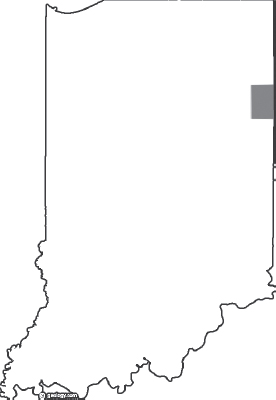
ADAMS COUNTY
VICTIM(S):
Cory R. Elson, 26
PERPETRATOR:
Mark L. Lichtenberger, 39
DATE OF DEATH(S):
April 3, 1999
A HIGH-POWERED AMBUSH

